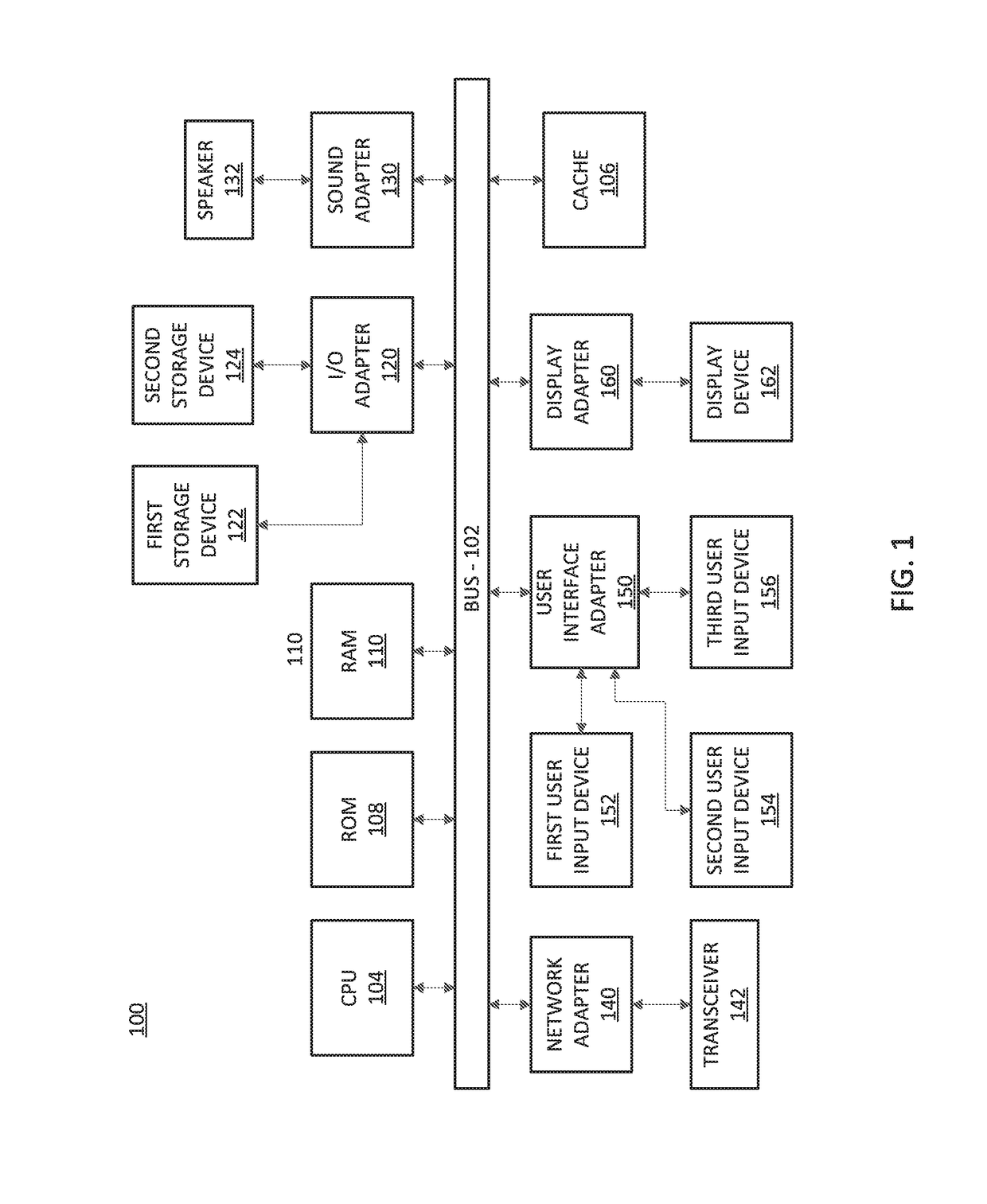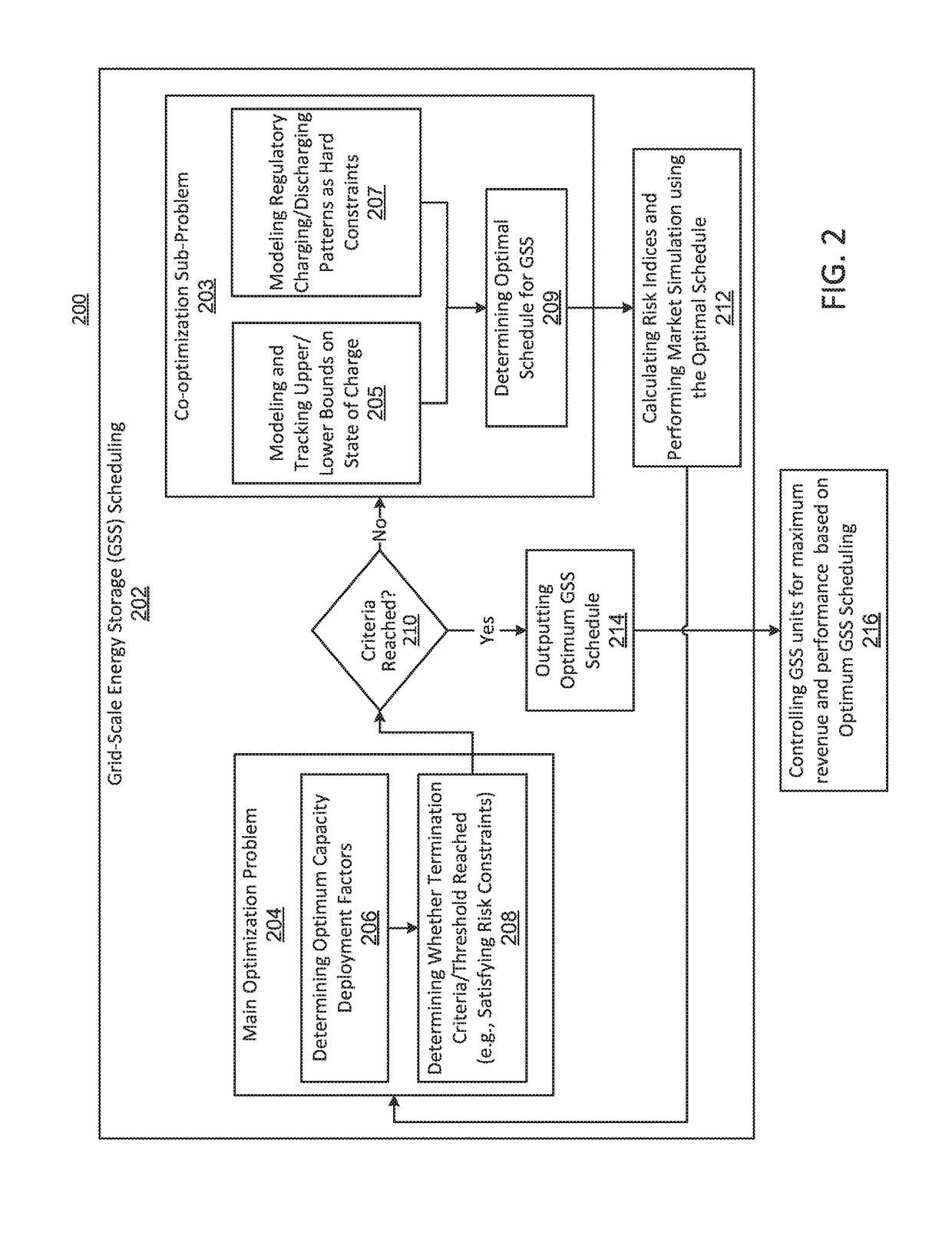Management of grid-scale energy storage systems
a technology of energy storage and grid scale, applied in the direction of process and machine control, instruments, computer control, etc., can solve the problems of affecting the life time of the gss unit, affecting the quality of the power system, and unable to guarantee the actual deployment of fr up/down capacity offered by the gss unit, so as to achieve the effect of reducing penalties
- Summary
- Abstract
- Description
- Claims
- Application Information
AI Technical Summary
Benefits of technology
Problems solved by technology
Method used
Image
Examples
case study i
[0069] In this case, we evaluate the performance of the method 200 for reducing the unprovided scheduled services. The SoC of the GSS unit remains between upper and lower bounds for the entire period in accordance with the present principles. Graphs (not shown) which show the simulation results for the developed co-optimization model, the hourly SoC and the upper / lower bounds on the SoC based on the hourly schedule, the scheduled power to participate in the energy market, the scheduled FR up / down capacities to participate in the FR market, and shows the price signals for energy, and FR up and down markets may be constructed and analyzed according to the present principles. Note that the FR down schedule peaks mostly when the discharging power for the energy market peaks. A reason is this practice provides the opportunities to gain the maximum revenue while satisfying equations (3) and (5). Similarly, the FR up and charging power for the energy market simultaneously peak the majority...
case study ii
[0072] In this Case Study, we provide the simulation results using our developed co-optimization model with duty cycle-based charging / discharging patterns. The duty cycle-based discharge starts at t=12 and 17 and lasts for 2 hours and 1 hour, respectively, with 1 MW guaranteed discharging power. The duty cycle-based charge starts at t=14 and 18 and lasts for 2 hours and 1 hour, respectively with −1 MW guaranteed charging power. The participation of the GSS unit in market is not allowed for these hours. The same GSS unit and deployment factors as in Case Study I may be used in this scenario.
[0073]Graphs (not shown) which show the simulation results, the hourly SoCs and the upper / lower bounds on the SoC, the scheduled power for energy market and duty cycle-based charging / discharging power, the scheduled FR up / down capacities, and the price signals for energy, FR up and down markets may be constructed and analyzed according to the present principles.
[0074]In accordance with an embodime...
PUM
 Login to View More
Login to View More Abstract
Description
Claims
Application Information
 Login to View More
Login to View More - R&D
- Intellectual Property
- Life Sciences
- Materials
- Tech Scout
- Unparalleled Data Quality
- Higher Quality Content
- 60% Fewer Hallucinations
Browse by: Latest US Patents, China's latest patents, Technical Efficacy Thesaurus, Application Domain, Technology Topic, Popular Technical Reports.
© 2025 PatSnap. All rights reserved.Legal|Privacy policy|Modern Slavery Act Transparency Statement|Sitemap|About US| Contact US: help@patsnap.com



